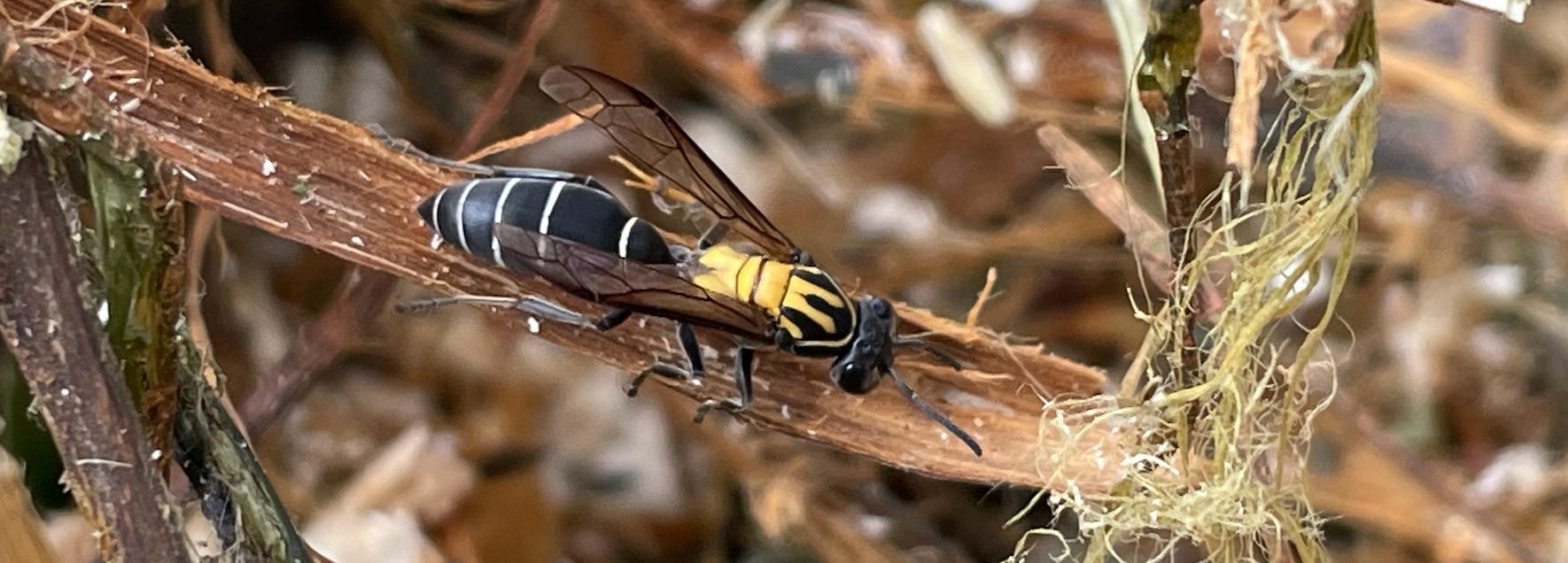Agroforestry With Local Farmers in Brazil's Atlantic Rainforest Region
A Team of Master's Students from Miami University's Project Dragonfly Works Under the Tutelage of Local, Sustainable Farmers in Southeastern Brazil.
In the summer of 2023, a cohort of master’s students from Miami University’s Project Dragonfly, including myself, experienced what it takes to produce food by working with nature. We learned agroforestry methods from local farmers situated amongst miles of rainforest in southeastern Brazil. We worked for hours under the tutelage of these incredible food producers. We chopped banana trees with machetes, carried them up a hill on a wagon, and spread chicken manure and natural fertilizers into the soil, all while being beaten down by the unrelenting sun and the hot, humid atmosphere of the Brazilian wilderness. I was bitten more than once by intimidating insects!
Though it was a physically demanding day, I’ve rarely felt more alive in my 25 years of life. Dripping in sweat, I’d be chewing on a piece of sugarcane (offered to me by one of the local workers named Pedro) while carrying the wagon full of banana trees up the hill. By the time I was at the top of the hill, my heart was pounding out of my chest. I’d dump my wagon full of banana tree pieces in a designated area and then go back down the hill with the empty wagon to refill it with banana tree pieces and carry the full wagon back up the hill again. Project Dragonfly students took turns repeating this process, as well as spreading manure, phosphate, and “worm food” into the soil near the young crops in a specific order. Once that was finished, chunks of banana trees would be placed wet-side down on the dirt, on top of the layers of manure and phosphate, right next to a young coffee, banana, or papaya plant. The liquids of the banana tree piece will water the young plants for days to come. Lastly, we would place a layer of straw and grass over everything so the banana tree pieces wouldn’t lose their moisture due to the sun, that big ball of fire that loomed over us as we worked, indifferent to our struggles throughout this entire day. We also used shovels and similar tools to organize the rows of crops and clear pathways for walking. It was an experience of a lifetime.
“A very unique-looking wasp I stumbled upon while working! Biodiversity was all around us!” - Saadat Faiz
“The woman wearing the same pants as me is my friend, Ashley Revay. She is the co-founder of Mantra, a sustainable clothing brand. Listen to our podcast!” - Saadat Faiz
By the end of this day, a day full of physical and mental work, we circled around the local farmers at the bottom of the hill. They gave a concluding speech (translated by Laila, my friend, as well as a young bilingual woman whose services helped us tremendously on this expedition). One thing they said in this speech I will never forget. They proposed, “Now imagine doing everything we did today, all on your own.”
Our group of 25+ hardworking individuals managed to fertilize a field of young coffee, banana, and papaya plants over the span of nearly the entire day. The thought of one of us doing this all on our own was daunting. It would literally take weeks of work if it were one person. That was the moment I fully understood the importance of local workers and community involvement. It takes an army to run a sustainable farm. An army of hard-working, level-headed, positive individuals with a deep love for nature. A love for our planet.
Many people think of farming as a kind of human invention. In a way, it is. 12,000 years ago, the Agricultural Revolution drastically shifted the course of human history. During this time, much of humanity began saying goodbye to the hunter-gatherer way of life. Our nomadic way of life was coming to an end. By figuring out how to produce crops and raise livestock, humans could stay in one area and start building civilizations because there was now a consistent supply of food. In essence, Homo sapiens discovered how to produce food from the land.
Although it is to our credit for discovering how to produce food, we weren’t the ones doing the actual production of the food. Farming is entirely dependent on natural systems. No water? No food. No sun? No food. No microbial and fungal life in the soil? No food. No understanding of nature’s systems? No food. Not for long, at least. That credit goes to Mother Earth.
In a world where industrial food production methods reign supreme, the best way you can help farmers who work alongside nature, such as the incredible people we had the opportunity to work with in Brazil, is to purchase food from sustainable, local farms. Be wary of greenwashing! Without the support of consumers, agroforestry, and local, sustainable farming does not even have a chance of being readopted as Homo sapiens’ primary way of producing food on this incredible planet we call home.
Do you know of a way of farming that is good for our planet? If so, share below in the comments! Share anything else you’d like as well! I will try to respond to all comments.
Thank you for reading this article! Stay tuned for more!
